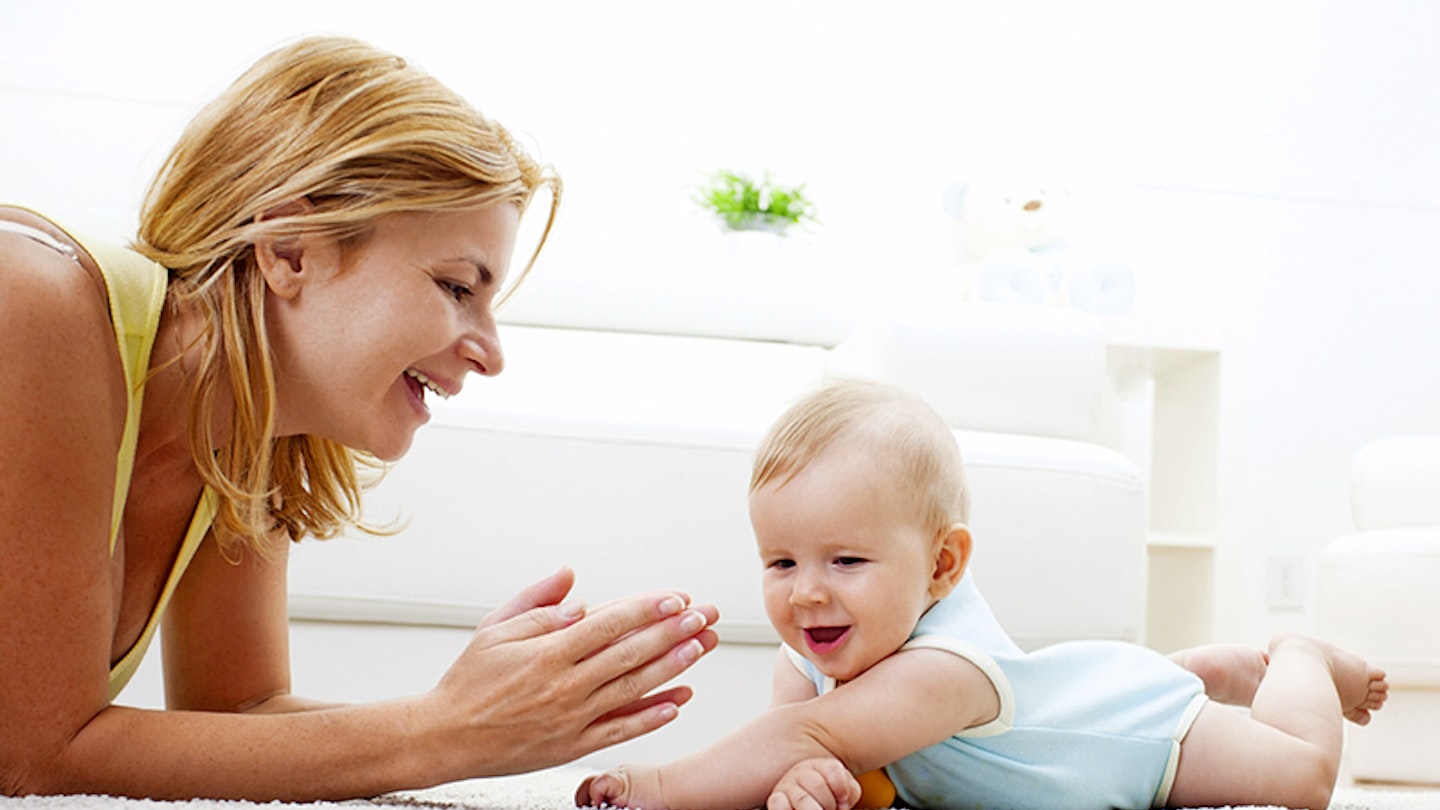As your baby reaches four months and beyond, you'll find they get a lot more active. They'll get more confident at holding the weight of their head, rolling over and generally learning all the wonderful things their little bodies can do.
Rolling, tummy time and interacting with your baby at this stage to support their development and motor skills is invaluable. These little milestones will pave the way for larger milestones such as crawling and walking.
The easy exercises below are examples of what you can do with your baby to help them learn and grow.
Rolling over
A significant development around five months is when your baby can roll on to their side and stay in this position to play. Some babies will play with a toy in one hand, while resting their head on the floor. If the toy is light enough, your baby may be able to lift their head up off the floor while holding the toy in one hand, waving the toy around and watching its movements.
To help your baby get better at rolling over on to their side, position yourself on one side of them to encourage them to roll on to that side of their body. Then move round to the other side, and repeat. Have their favourite toy ready to give to them once they've managed to roll over.
Mastering tummy time
Babies typically begin rolling over from their back and on to their front any time between four and five months. When your baby is lying on their tummy, supported on their forearms, they can lift and hold their head centrally. They’ll then be able to co-ordinate both sides of their body and bring their hands together, tuck in their chin, and look down at their hands for more purposeful play explorations.
Lie down flat beside your baby on the floor, and position a small pillow under your head. Then roll on to your side so you are facing your baby and, with their body curled, gently scoop them up in your arms and roll them over on to your body, so they are lying with their tummy placed against yours. You may feel their little hands softly push against you as they carefully lift their head up without bobbing. Doing this, they are developing good head and neck control. Make soft humming sounds so your baby feels the soothing vibrations transmitting through your body to theirs.
Be prepared for coos of contentment from your little one – and yourself!
Interaction and response
When your baby is lying on her tummy on the floor, they will learn to shift their weight sideways to support themself on one arm, freeing the other hand for reaching. They might reach out with one hand to touch you, or playfully slap the floor, or maybe they are getting ready to belly-crawl forwards. If you lie down on the floor with them, you’ll notice all this.
You don’t need a lot of toys when interacting with your baby – less is more! Respond to what your baby is doing.
Position yourself and your baby on the floor, lying on your tummies and supported on your forearms so you are facing each other. Pause and patiently wait to see what your baby does. They may reach out to touch your hand. Mirroring the same side, you can then playfully touch their hand with yours. So use your right hand to touch their left hand, then pause and then touch their left hand with your right hand, or vice versa. They may touch your hands and then pull both their hands away to surprise you. When they play an action joke that they find funny, they’ll watch your response to see if you find it funny too.
More from Mother&Baby.co.uk
-
Whether you’re planning your new baby essentials shopping list, giving friends and family gift ideas, or planning for your baby shower, the Amazon Baby Wish List allows you to keep track of all your shopping ideas in one place. Click here to start yours today!
Has your baby started rolling over? Let us know on Twitter! And while you're there, follow us on Instagram and Facebook too!
